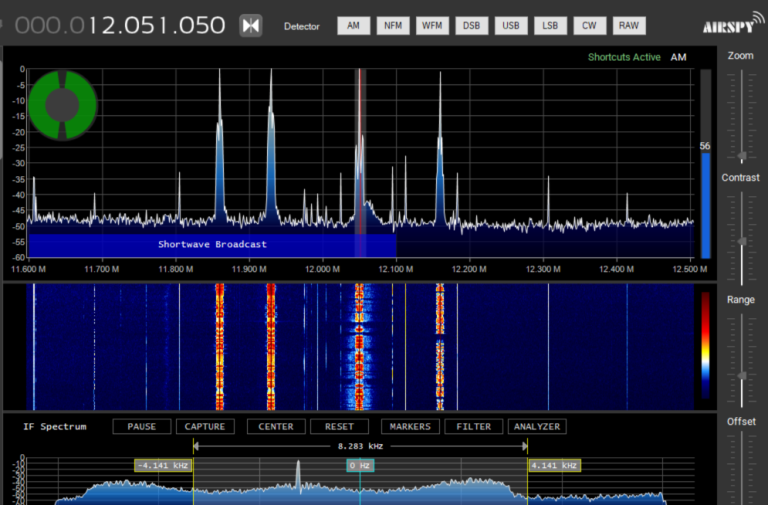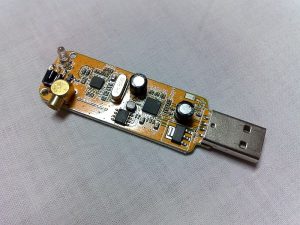What is the Definition of SDR?
What is SDR? Here we explore its definition and significance. SDR stands for Software Defined Radio. Today, the versatile processing capability of computers and mobile devices can be used to replace much of the electronic hardware components of traditional radio receivers and, to a degree, transmitters. A rather basic radio receiving module that manages to feed relatively raw baseband data into a device capable of running software allows software to take over processing from that point on, instead of relying on traditional radio circuitry to focus on bandwidth and tune, filter signals, and demodulate them using any given mode such as AM or FM, or protocol such as Slow Scan Television (SSTV) to turn them into usable signals and even show you where outstanding signals lie on the band, as discreet spikes on a spectrum analyzer graph.

The author’s 12 MHz-ish signals available at the time of writing, via Airspy’s SDR# freeware, using an upconverter-equipped RTL-SDR dongle on a PC, and a homemade, outdoor antenna.
A revolution happened when European-based MPEG video broadcasting known as “digital terrestrial television” (as opposed to satellite), specifically named Digital Video Broadcasting – Terrestrial (DVB-T) spawned the mass production of a USB dongle featuring the 8-bit processing chipset, the famed RTL2832U. This was the release of the DVB-T USB TV tuner dongle originally meant for a rather finite purpose of watching television on a computer in 1998.
Steve Markgraf and the company Osmocom, along with Eric Fry and Antti Palosaari, discovered the inexpensive device could be “hacked” and used with custom-made drivers allowing an enormous swath of the radio spectrum, from kilohertz to gigahertz, to be accessed and interpreted with any software they wished. As RTL-SDR.com puts it, the discovery, “…became extremely popular and has democratized access to the radio spectrum”. The RTL-SDR was born. Anyone with around $20 (now less) and a computer with an adequate sound card or equivalent could now download free, open-source software such as SDRsharp (SDR#).

Inside a DVB-T USB dongle using Realtek RTL2832U (IC on right) as controller and Rafael Micro R820T (IC on left) as tuner
Now many, more sophisticated SDR’s exist, but RTL-based dongles are still a major player on the scene due to affordability and surprising capability. One of the most useful mods to the traditional hardware is an “upconverter” chipset addition that uses actual electronics to convert lower frequencies (such as traditional, broadcast AM radio and shortwave) into the VHF or UHF frequencies the RTL-SDR is properly equipped to handle. These lower bands may be accessed using a plain RTL-SDR that does not possess an upconverter, using only software means (and sometimes a jumper mod) but, if the hobbyists is particularly interested in frequencies below VHF, the extra $30 or $40 (for a total of $50 or $60) is worth the added expense in terms of efficiency and performance.
For $60 the author of this article was looking at countless spikes representing individual radio signals on a spectrum analysis graph, bouncing in between modes, and “surveilling” the world in manner virtually befitting the CIA just a few years prior. Users occasionally hear genuine, eerie spy “numbers stations”, receive images from astronaut or cosmonaut radio hobbyists on the International Space Station, and it has caused a bit of a revival in shortwave radio listening. With practice you can even intercept NOAA satellite signals and rectify them into satellite imagery of your part of the globe. VHF projects like this may be achieved with a simple antenna set of traditional TV “rabbit ears”, albeit better they are stationed outside. Even radio astronomy is on the SDR hobbyists menu.
SDR has opened up a world of adventure and exploration of a remarkable amount of the EM spectrum for pennies on the dollar – a true revolution for the radio enthusiast.
